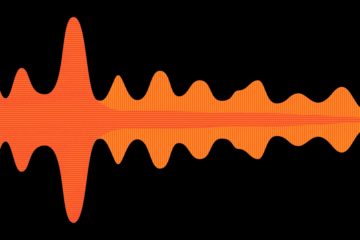On many forums you’ll see audiophiles trying to recreate “studio acoustics” in their home. They seek the “true sound”, as it was recorded.
This article will explain why this is not only an almost impossible task, but also one nobody should ever wish to achieve.
Studios and listening rooms – living rooms for most audiophiles – are really very different environments, different tools, for different uses. Let’s see what they are all about.
Let’s start by having a good look at studios. What many people don’t understand is that there are multiple types, each serving very different purposes.
Studios
Recording Studios
A major acoustic factor for a studio is its reverberation time, the time it takes for any generated sound to bounce around the room, lose energy, and become inaudible.
Another studio characteristic is its acoustic neutrality: it must provide an even response across all the audible spectrum frequencies (20 Hz to 20 kHz).
A recording studio will generally have a reverberation time of less than 0.6 seconds where the musicians play. In vocal booths that reverberation time is reduced to almost zero. In addition to this, a recording studio is designed from the ground up to be neutral over the entire audio spectrum.
Recording studios come in two flavours. Artists preferences vary, leading to the selection of one flavour over the other.
Separated recording and control rooms
The first flavour, and most common of the two, is where the recording space (where artists play, with microphones), or live room, is separated from the control room (with the mixing desk, and a load of various other equipment used for recording).
Bands can still play together, at the same time, but, most often, a single musician records his or her parts in isolation, on isolated tracks, and then the engineer and producer “mixes” each part from the recordings to produce the finished mix.
This is the more conventional and most used type of studio, which explains why this is the picture that comes to most minds when the words are mentioned.
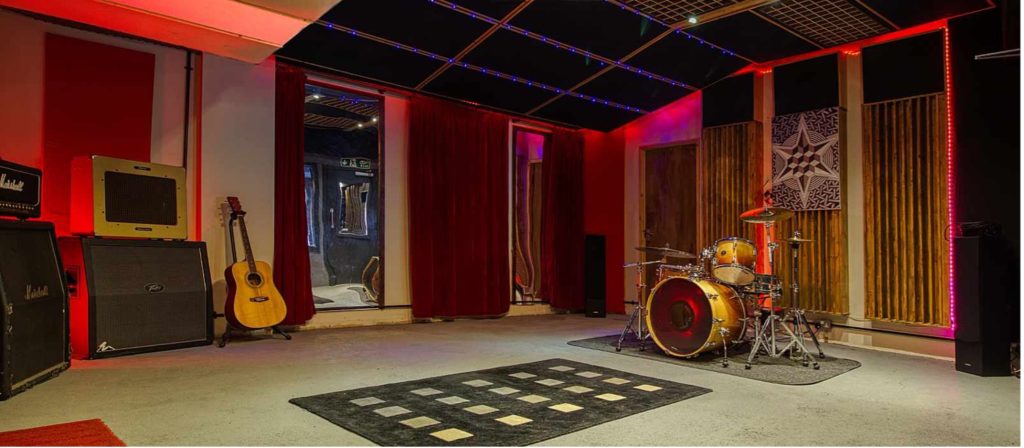
This is a medium sized live room, where a band or musician can easily record group or individual parts. You can clearly see the acoustic panels in the background and on the ceiling. The intention here is to control the room’s acoustics, removing various artefacts, and only focuses on the musicians. It also gives “space” to a recording. The engineers usually know their rooms well enough to be able to subsequently dial out anything that hasn’t been dealt with by acoustic treatment, using tools like equalisation, compression, and gating.
There are often additional isolation rooms in many recording studios, where vocals or instruments can be played and recorded with no external noise or interruption. These separate rooms often have highly controlled acoustic characteristics, with reverberation times well below that of normal rooms. It is very common for the band to play in the main live room while the vocalist records in the isolation room, with no extraneous sound recorded with the voice.
The live rooms are usually under observation from the control room.
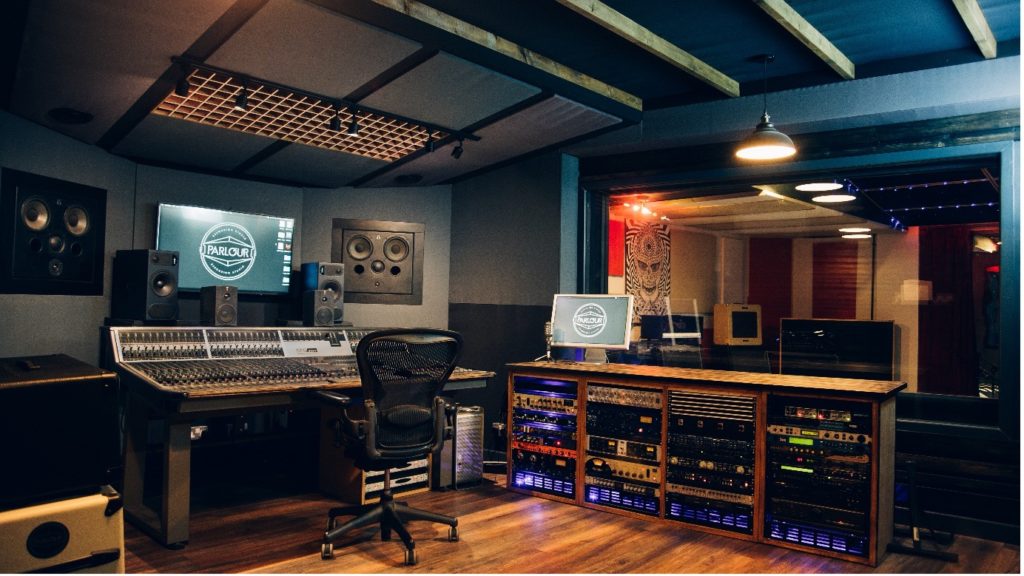
It is in the recording studio’s control room that the mixing and monitoring of a new piece of music happens.
Reverberations, reflections, and tonality need be controlled, leading to heavy acoustic treatment, way more than in the live room. The room is often shaped to ensure that the engineer can work with accurate sound that is precisely targeted at the mix position.
These are not always comfortable environments to spend time in! They are engineered spaces where artists, bands, producers, and other interested parties can record, produce, and assess a track in its raw state. Studio designers often go to great lengths to ensure that these rooms can be bright, airy, and comfortable places to work in, one of the signs of a great studio is that it takes little adjustment to get used to working in them and they feel comfortable immediately.
Open studios
The second recording studio flavour is where the artist and band all perform together, with the recording equipment is in the studio alongside them. The live and control rooms are one.
This is great for artists and their bands to jam with each other. There is a different energy that comes from recordings made this way.
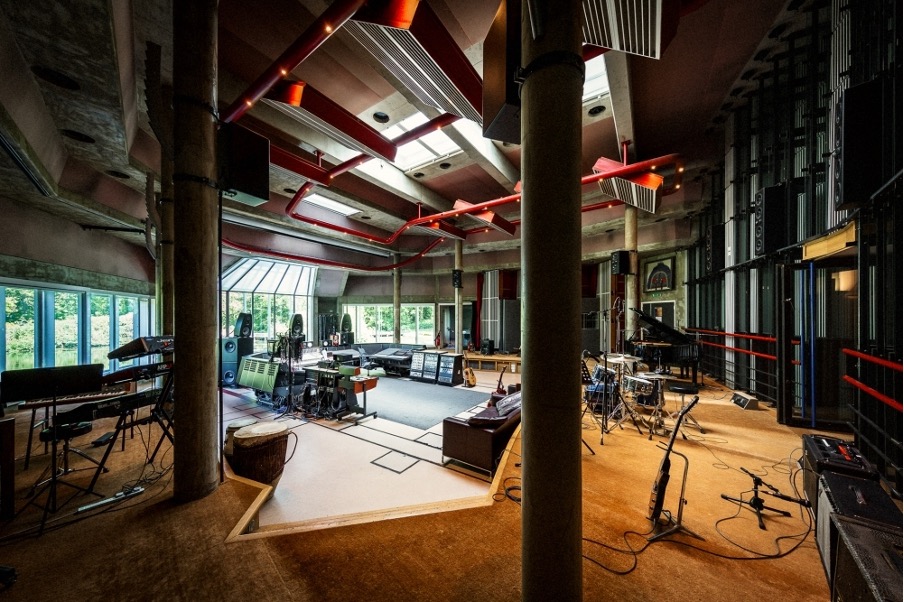
In the photo you can see the area where the band plays. The mixing desk, where an engineer and producer will usually work from, is on the lower level.
As you can see there is a large amount of acoustic treatment making the room acoustically neutral. This treatment, however, creates a slightly longer reverberation time than a traditional recording studio often possesses.
One of the main purposes of working in a room like this is to capture the ambience and the energy created by a band playing together. There are disadvantages too; some musicians find it very difficult to deal with distractions and things like overdubs and vocal harmonies can be difficult in spaces such as this.
Sometimes a “live” recording is made in a space like this, and the levels balanced “live” by the engineers. Engineers working in this sort of environment are often ex tour engineers who are used to large numbers of tracks coming in and have often worked with a particular band for many years.
Recording studios commonalities
Some of the treatments that go into studios are large diffusion panels, elastomeric pucks for floors, and more. The entire rooms will sometimes be isolated from the rest of the building, floating on isolation material, using large volumes of acoustic absorption, with special soundproof doors and materials in walls that prevent sound transmission.
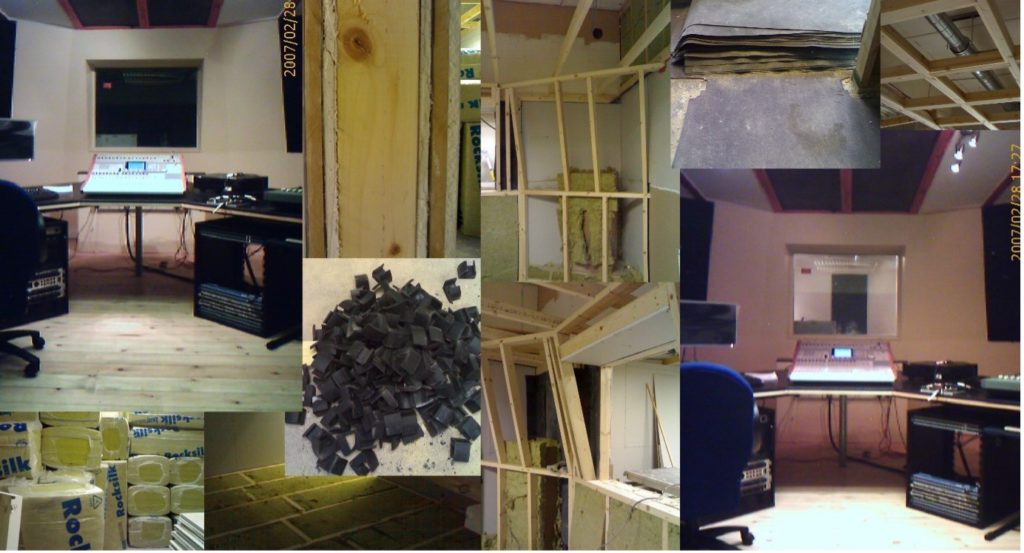
A recording studio is set up to record and mix audio tracks in a very analytical way; enjoyment has no place.
Recording studios are designed and optimised, often from the ground up, to be accurate in tone and timing (the reverberation times are controlled). They take the recorded instruments, voices, or combination of both, and reproduce them as accurately as possible to manufacture a music track. A recording studio must be accurate, analytical, able to highlight every part, down to the gritty details. It sounds dry and lifeless. This is very different for what you require in your living room.
You would not easily recognise the music you are used to listening to at home when it’s played in its studio format and environment! Things like compression, reverb, EQ and various enhancements are all processes of a studio. All these things are added during and after recording.
“I want to hear what the recording engineer/producer heard” is quite simply a ridiculous proposal in most respects.
This is an example of what comes from a recording session:
Here is a mixed, but unmastered track, including the above voice:
Mastering Studio
Once a track or album is recorded it is then sent to a mastering studio.
A mastering studio is a very different environment to a recording studio. They are usually lightly treated from an acoustics point of view. The equipment kit is also very different; you will not see a huge mixing desk with hundreds of sliders there! Most mastering studios normally use good Hi-Fi kit, not ridiculously high-end stuff, but good, at least in its sonic signature and presentation.
A mastering studio provides the spit and polish to a recording, transforming it into what you hear on an album or single. Mastering is nearly a dark art and uses high-quality monitoring, conversion, EQ, and compression to produce the finished article. It is there that recordings become listenable in normal environments like your home.
Many mastering studios then can cut masters directly or give a production house the final files to produce masters from. Those masters are then used for duplication and sales.

This is the same track as above, after mastering, for general use (Original mix):
Alternative mix and mastering, prepared for direct club use, with expectations about its acoustics and installed sound system (Annoyance mix):
As you can hear, there is a huge difference between the isolated recorded voice, the mixed track, and the mastered track. In all cases, while acoustic treatment in the various rooms has played a part, the fact is that the most desirable place you want to be at is in the mastering studio. You want the finished product. It can be mostly achieved in your living room.
There is also often a last step in the track production train, one that isn’t really anything to do with any of the specialists here and one that has become more prevalent in recent years, that of the normaliser. The mastering studio will have used some normalising as part of their processes, but when a modern master is prepared for pressing, most production houses will, as a matter of course, normalise the entire record some more. Which, more often than not, makes everything loud and appear to be at the same volume. In many cases this is a purely computer driven process, it can and does introduce distortion, reduces the transients in the finished music, and is generally looked down upon outside of the mainstream teen radio fare. However, it further destroys the mythology of treating a room to sound like a studio.
The home environment
Your home listening environment was never designed to be used as a recording studio. Its size, shape, and construction are rarely optimised for amplified music. It is however designed to be sung in, have a musical instrument played in or even an acoustic band.
This is because since the formation of the guilds in the late 19th century, architects have been bound by codes and guidance which says that “rooms must be suitable to ensure quiet enjoyment”. There are a set of guidelines that have been drawn up to ensure that people could entertain “politely” without interrupting their neighbour’s enjoyment of their own living spaces. In other words, the diverse size and shape of your living room (and indeed almost all rooms in your house) have an amount of acoustic sensibility built into them.
Your home is designed to be able to play an instrument or sing in if the codes and knowledge gleaned over the past few hundred years are adhered to.
Your home listening room is more than likely to have been designed for music as an acoustically reasonable environment. The dimensions are likely to be good. Once there is furniture installed, your room is unlikely to be too resonant or have really weird acoustics, unless you or someone else has gone knocking walls down and otherwise ripping things to bits. Even then, it’s unlikely you will create a nightmare from an acoustics point of view.
Most rooms, once populated with furniture, have a reverberation time of around 0.8 seconds. This is a comfortable amount of reverberation. It allows your room’s timbre and natural decay to shine through. It’s not oppressive or dead sounding. It’s not so “live” as to lose intelligibility from quiet conversation through to a good shouting match. I’ll challenge you: try transforming your living room to the point where human voice becomes unintelligible. It’s almost impossible.
Unless you have a dedicated listening room, you are likely to be setting up in your living room. It will feature some of the best and most natural acoustic treatment possible already installed in it: furniture!
The furniture in the room has a massive impact on its acoustics properties. Sofas, rugs, carpeting, reflective mirrors windows, walls, doors, and alcoves… They all, believe it or not, mostly positively influence acoustics.

Studio vs. home
The human auditory response has evolved over hundreds of thousands of years to operate in a wide variety of environments. It is not, however, designed or optimised to hear anything in a damped acoustic space, as it does not spontaneously exist in nature at all. We take auditory feedback from the echoes and liveliness and space around us, it allows us to be aware of our surroundings. Hearing and the entire auditory systems are such a profound sense to us that they affect and effect much of what we do. Not only are these systems in our heads, capable of hearing and defining sounds, but they are also responsible for balance, spatial awareness, location, topography, survival, and many other deeply rooted sensations. They are also primarily responsible for what most people perceive as emotion generators.
When we are placed into spaces that are alien to the nature of our hearing, we enter a state of high anxiety. Try staying in an anechoic room for any length of time without experiencing uncontrollable panic. Those are not great conditions leading to the enjoyment of music.
Many people walking into a studio for the first time feel very uncomfortable; it’s not a natural place to be in. On top of that the systems rendering the music are meant to be quite unapologetic towards natural imperfections. No compromise. No emotions there.
Music in your home is not a sterile experience as it is in a studio. You can never get that “studio experience” in your home, nor should you try to achieve it. Music is all about experience, and for many, emotions. Homes are rarely acoustically bad and will promote emotions. There will be compromises of course, but that is part of the joy of music.
Why would you want to inflict the harsh realities of a studio to yourself?
All this recording, mixing, mastering and production was planned and executed for your enjoyment AT HOME!

